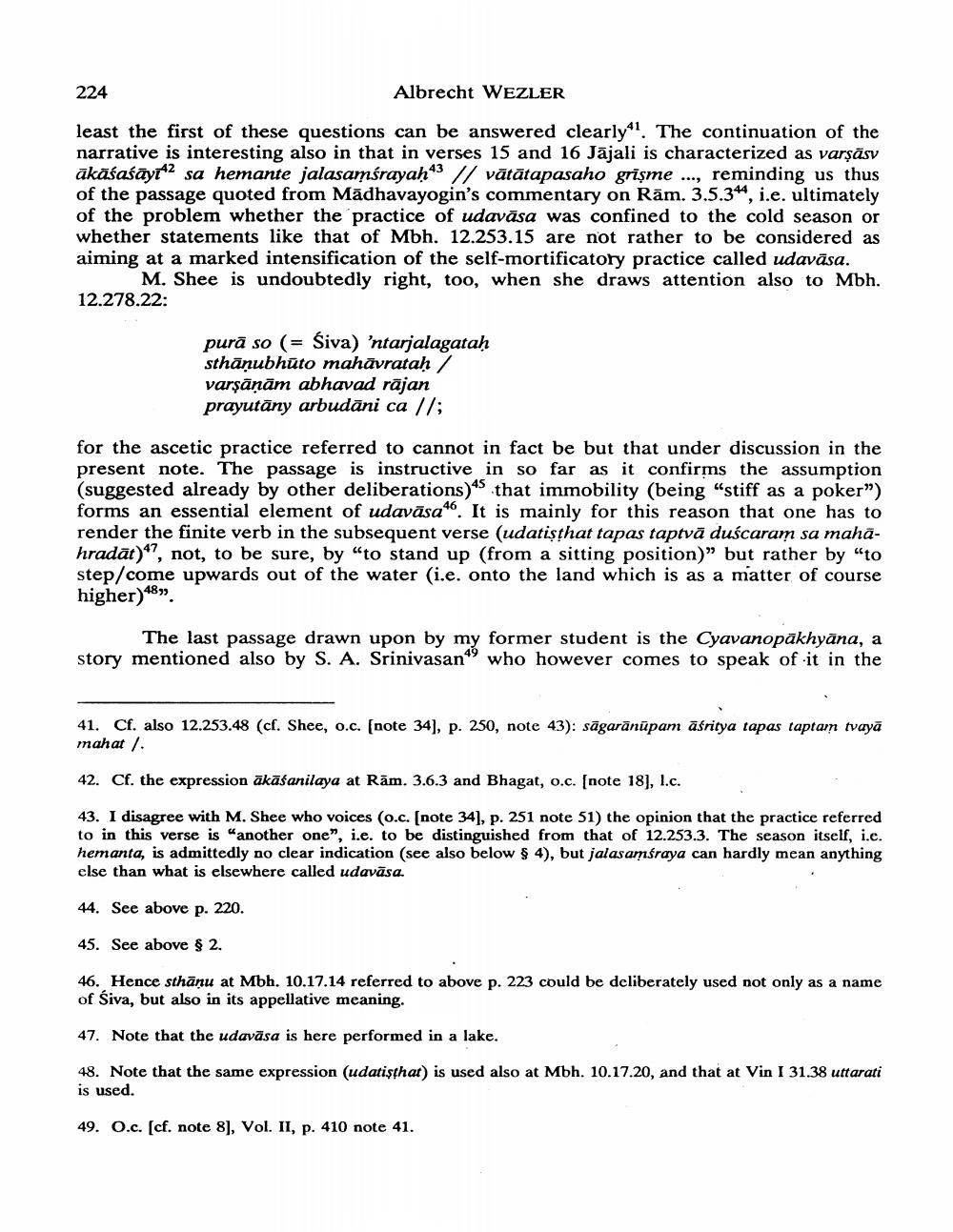Book Title: Note On Class Of Ascetics Called Unmajjaka Author(s): A Wezler Publisher: A Wezler View full book textPage 8
________________ 224 Albrecht WEZLER least the first of these questions can be answered clearly4l. The continuation of the narrative is interesting also in that in verses 15 and 16 Jājali is characterized as varşāsv akāśaśāyr42 sa hemante jalasamśrayaḥ43 // vātātapasaho grişme ..., reminding us thus of the passage quoted from Madhavayogin's commentary on Rām. 3.5.314, i.e. ultimately of the problem whether the practice of udavāsa was confined to the cold season or whether statements like that of Mbh. 12.253.15 are not rather to be considered as aiming at a marked intensification of the self-mortificatory practice called udavāsa. M. Shee is undoubtedly right, too, when she draws attention also to Mbh. 12.278.22: purā so (= Siva) 'ntarjalagataḥ sthānubhūto mahāvratah varşāņām abhavad rājan prayutăny arbudāni ca //; for the ascetic practice referred to cannot in fact be but that under discussion in the present note. The passage is instructive in so far as it confirms the assumption (suggested already by other deliberations)`S that immobility (being "stiff as a poker") forms an essential element of udavāsa46. It is mainly for this reason that one has to render the finite verb in the subsequent verse (udatisthat tapas taptvā duscaram sa mahahradāt)*7, not, to be sure, by "to stand up (from a sitting position)" but rather by "to step/come upwards out of the water (i.e. onto the land which is as a matter of course higher) 48, The last passage drawn upon by my former student is the Cyavanopākhyāna, a story mentioned also by S. A. Srinivasan who however comes to speak of it in the 41. Cf. also 12.253.48 (cf. Shee, 0.c. (note 34), p. 250, note 43): sāgarānupam asritya tapas taptain tvayā mahat /. 42. Cf. the expression ākāśanilaya at Rām. 3.6.3 and Bhagat, o.c. (note 18], 1.c. 43. I disagree with M. Shee who voices (0.c. (note 34), p. 251 note 51) the opinion that the practice referred to in this verse is another one", i.e. to be distinguished from that of 12.253.3. The season itself, i.e. hemanta, is admittedly no clear indication (see also below $ 4), but jalasamśraya can hardly mean anything else than what is elsewhere called udavāsa. 44. See above p. 220. 45. See above $ 2. 46. Hence sthānu at Mbh. 10.17.14 referred to above p. 223 could be deliberately used not only as a name of Siva, but also in its appellative meaning. 47. Note that the udavāsa is here performed in a lake. 48. Note that the same expression (udatişthat) is used also at Mbh. 10.17.20, and that at Vin I 31.38 uttarati is used. 49. O.c. (cf. note 8], Vol. II, p. 410 note 41.Page Navigation
1 ... 6 7 8 9 10 11 12 13 14 15 16 17 18 19 20 21 22 23 24 25 26 27
